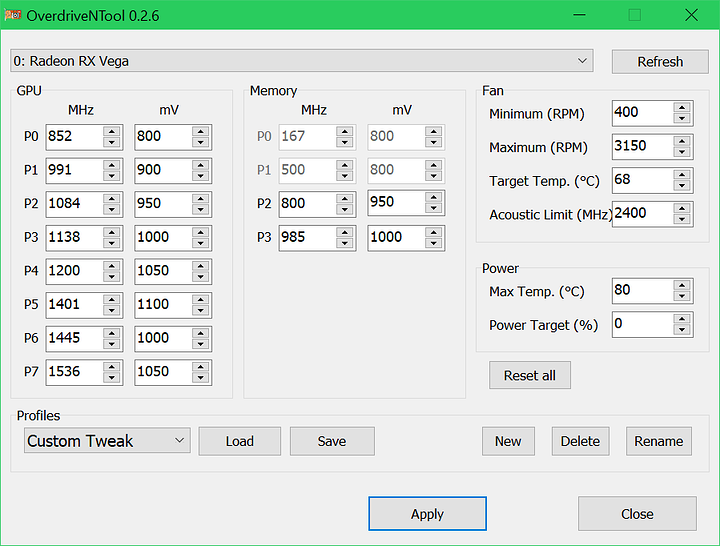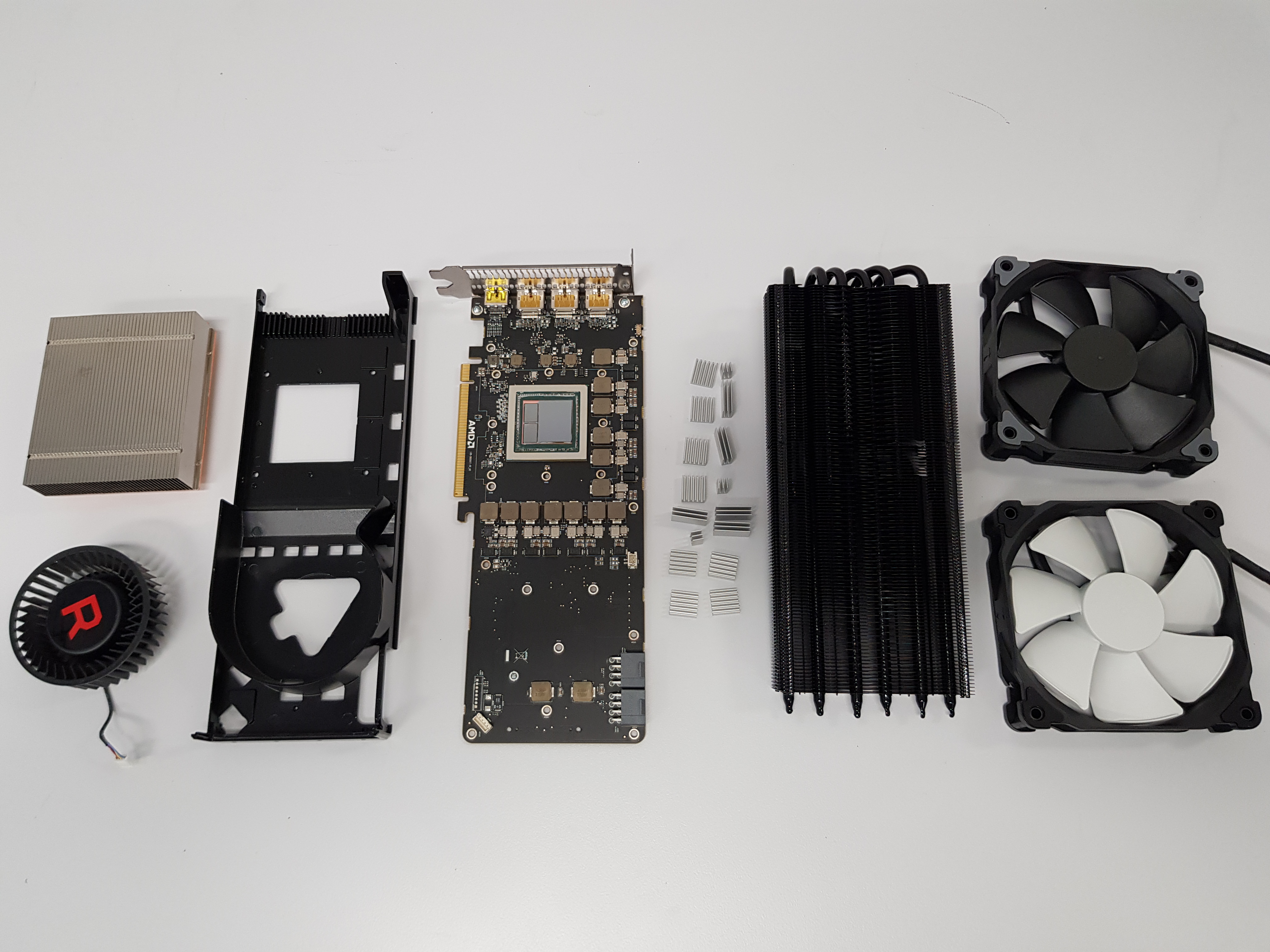Hey all,
I’ve lurked around this forum for a while and only posted a couple things…
But I figured this is the forum that would be the most interested in the Vega56 settings that I have come up with.
I have a reference Vega56 with the reference blower fan… as those of you who have these cards know… these things REALLY STRUGGLE to cool past 220w (stock vega64 TDP).
So after reading numerous overclocking guides for the Vega56… I determined that they all were useless if you were running a stock cooler. Infact even the undervolting guides weren’t so useful as most of them had you putting all your power into the HBM and still cranking the power limit to +50% and thus sitting in thermal throttle land with a screaming card 24/7.
Upon doing some testing of my own with all these guides… I flashed my Vega56 to a Vega64 bios (as many of the guides require, since you need the additional voltage for the HBM).
After being unsatisfied with the results published by a number of different places (people on Reddit, Reviews from Newegg, Hardware Unboxed, Gamers Nexus, HardOCP, etc) I decided that it was time for me to do my own tweaking… Because I was logging the performance, temps, and power usage during all these different guides…
Now I haven’t done much GPU OC/tuning for a long time (Since X1600 Pro Era), and mostly have only tuned CPU’s and Ram timings.
My goals here were to get the most performance out of the stock Vega64 TDP (220W), keeping the fan under 3250rpm (since thats where it gets REALLY REALLY LOUD) and keeping the temps at or under 77C (since it tends to lose some stability as it approaches 80c).
This is what I came up with:
What the result here is clockspeeds that are consistently above 1400mhz and usually closer to or over 1500mhz, temps that are under 75c most of the time and a metric ton of performance…
For reference my Overwatch 4K Ultra performance went from ~94fps with dips to ~68 to ~120fps with dips to ~90. HoTS 4K hits 144fps with average gameplay fps near ~120, also on Ultra.
In Prey 4K Medium I went from around ~42 fps (I didn’t really play the game at this fps since It was too low for me) to ~58fps. It will dip to around 45 lowest I’ve seen but peaks around 68fps.
Outside of those 3 games, I haven’t done too much meaningful testing (atleast comparing the before and after results in the last week).
Since my card is a reference card… I have samsung HBM. I don’t know if such work would be possible with Hynix HBM.
I also did get a bit more performance out of the same settings with 1000mhz HBM, but I Found that often in low load tasks the card would crash the entire machine.
Truth be told I didn’t explore this too much as it could have been my boost clock was too high for my P7 (it was 1586mhz) and the core didn’t always have enough power if it boosted. But dropping the HBM to 985 from 1000 took away less than 1% performance and dropping the boost clock to 1536 didn’t affect performance at all (since it doesn’t typically boost that high anyway, only to around 1520mhz usually).
The whole key here is to free up enough power for the core to move, this was done by dropping the clock on the P6 all the way down to 1445… Because otherwise the core is too shy to boost to p7 state at all and it doesn’t matter if you set it to 3000mhz it won’t really ever use that state in a heavy load.
Since you cannot adjust P5 and below… you need to coerce the card to get into p7 by dropping the vcore on p6 along with the clockspeeds.
But the idea is that the clockspeeds are in an attainable range (not like the stock clock of 1536) that won’t cause too much power draw.
The HBM clock can also not be too high (mine can go to 1100, but doing such ruins the performance by more than 10% as it takes way too much power from the core and clockspeeds sit around 1360mhz) so you can conserve power.
With the massive boost in performance that I have seen… I wonder why AMD didn’t play around with this more and release the cards this way…
One of my friends just bought a Vega56 and was lucky enough to get Samsung HBM, so we will be trying this tweak on his card too to see if he can reach the same targets I have.
For some other reference my setup is:
Ryzen 7 1700x (OC 3.925)
MSI B350 Tomahawk Arctic
Team Xtreem 32GB 3766mhz (DC to 3200Mhz CAS 14)
Corsair H105 GTX
512G HP EX920
960GB Crucial M500
2TB Hitachi Ultrastar
Corsair Carbide Case
1x UP3216Q
2x UP2414Q (Yes its a triple 4K monitor setup)
Interested to see what other people have come up with, or if my tweaks can work for everyone 
Enjoying +25% performance boost (sometimes more) is nothing short of amazing, especially for free.


